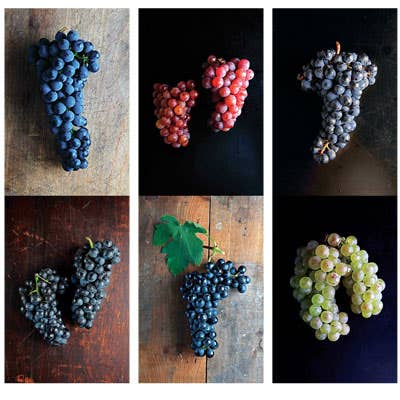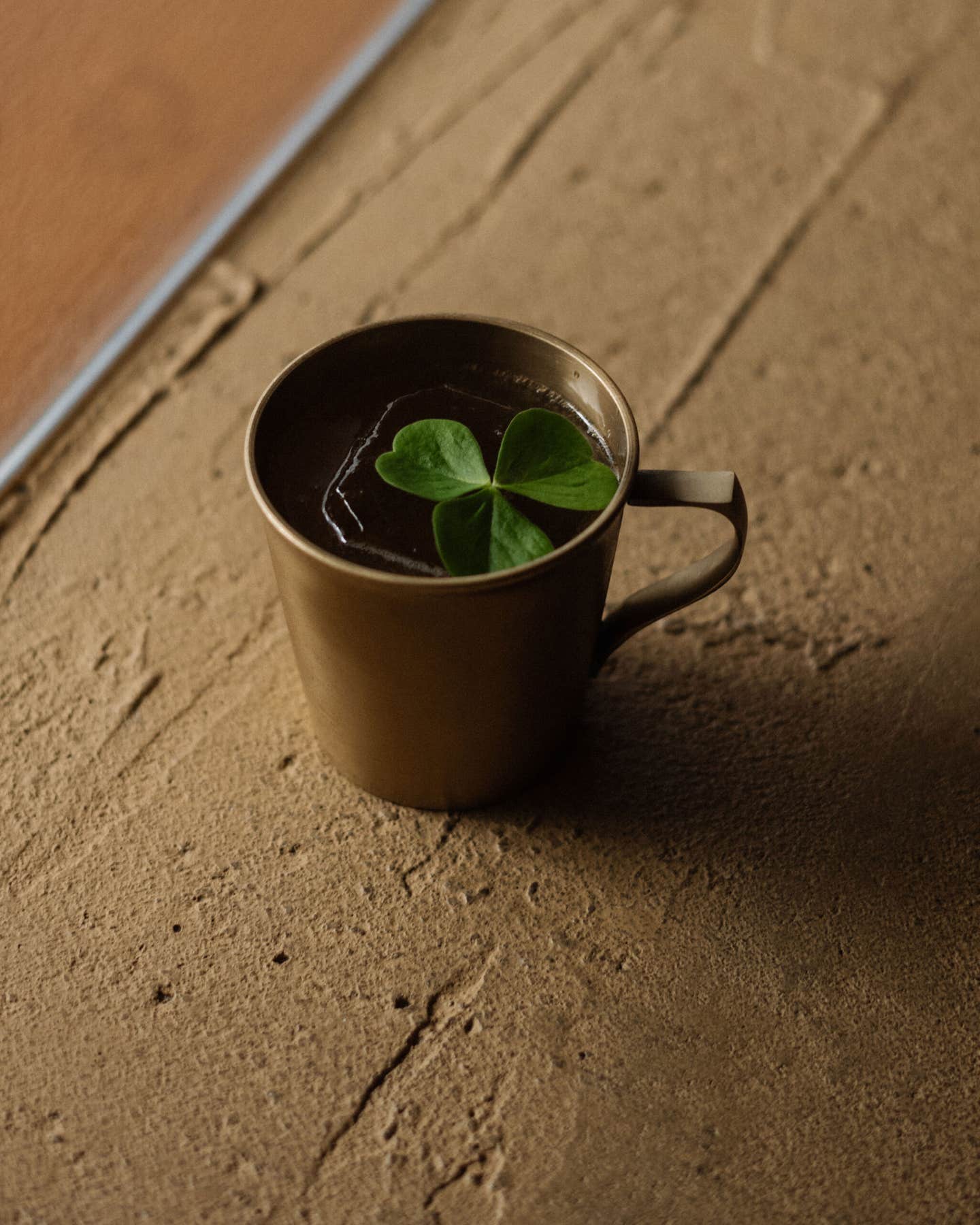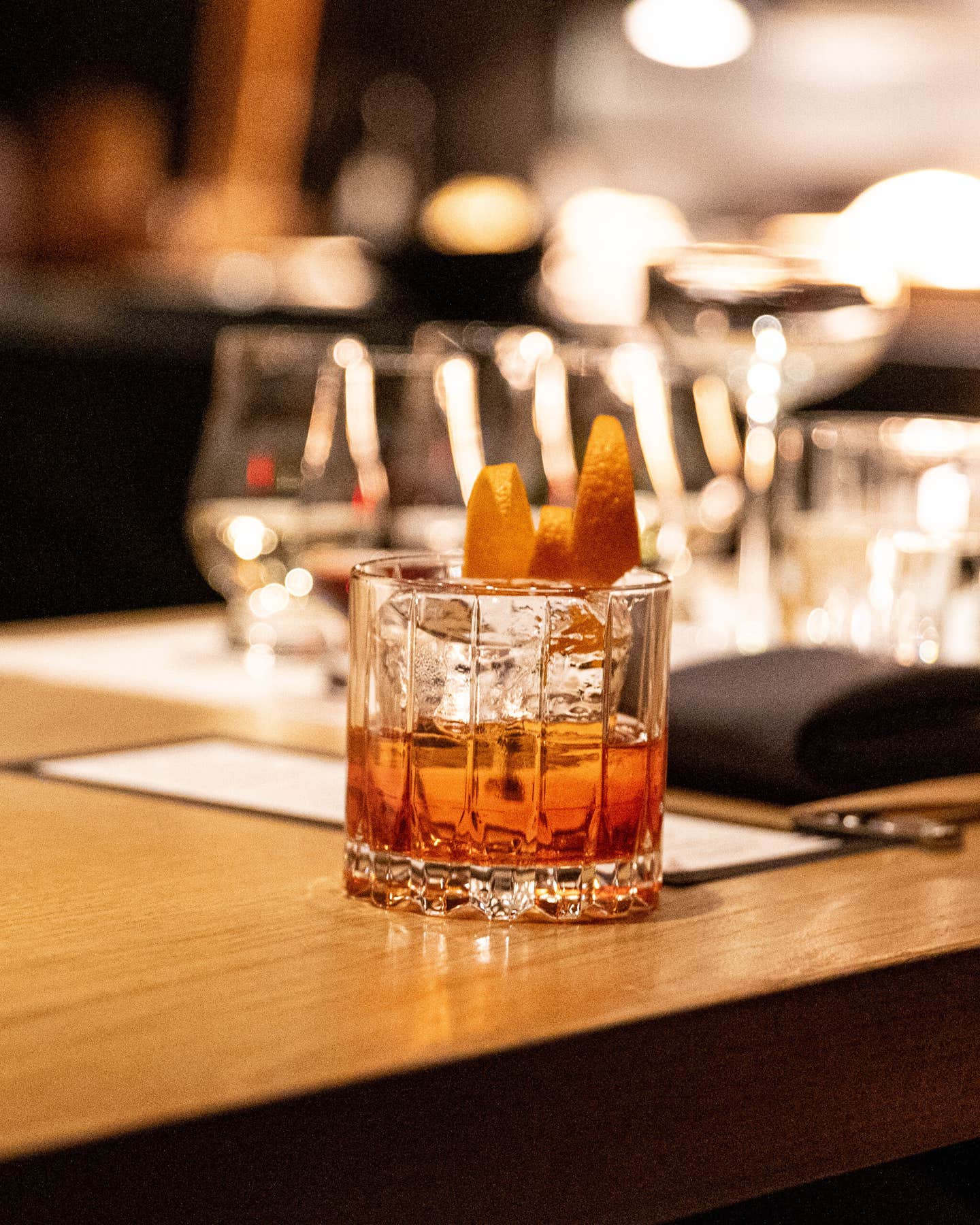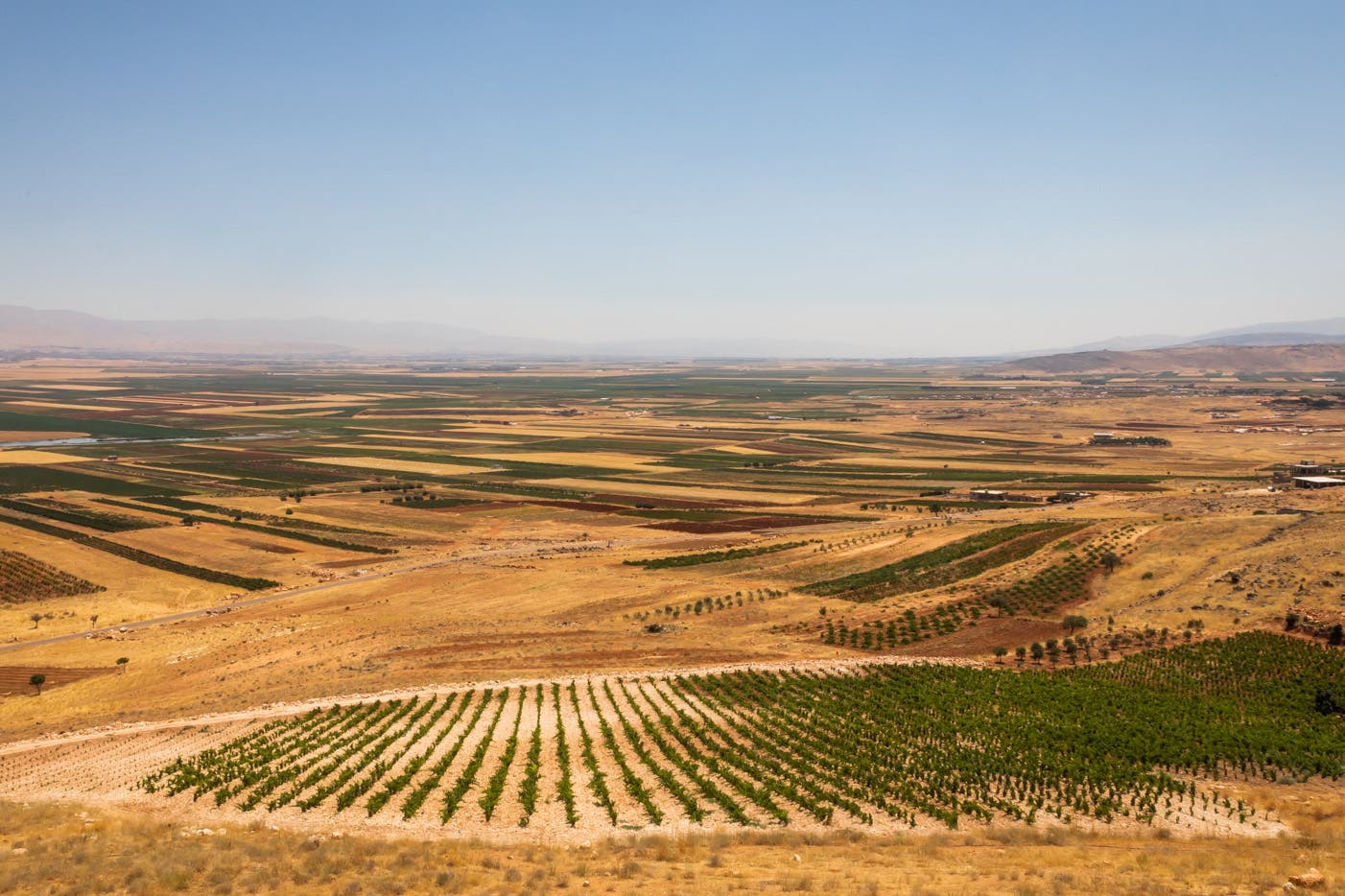
The New California Wine
A tribute to the legends and the pioneers of California’s wine history and a showcase of which bottles to buy now.
When I moved to California, four years ago, I'd tasted my share of its wines, and I was familiar with the frequent complaints: too much ripeness, too much flashy winemaking, too many wines that wallop you with big fruit. I'd been living in Seattle and had fallen in love with the hefty reds of Washington State, so big, luscious wines didn't faze me—in theory. Was I ever unprepared, not only for the ubiquity of oaky, overwhelming bottles but for the acceptance—the presumption, really—that bigger was indeed better. At parties and in tasting rooms, the wines being poured were the opposite of easy drinking. Something had happened to the freewheeling sense of adventure of a few decades ago, when California's wine industry seemed poised to steamroll the Old World with fresh, interesting wines. Judging by what many people were drinking, monotony had taken over.
What had gone awry? And where was California's next hope? If you were to consider the state's winemaking history—even just the flicker-reel version of it—the trajectory makes sense. Since the 1770s, when Spanish missionaries in need of sacramental wine planted California's first grapes, vineyards have thrived here. The fog, warm days and cool nights, and diversity of interesting soils and sites (from loamy valley floors to limestone ridgetops) offer incomparable potential for great wine. In the boom years right after the Gold Rush, the state's wine production nearly tripled; the wine was frequently rustic and blended from an assortment of grape varieties. But as the nascent industry swelled with new arrivals, some of whom were from Bordeaux and other European wine-growing regions, the interest in making fine blended and single-variety wines grew. In 1938, winery owner Georges de Latour, whose Beaulieu Vineyard in Napa's Rutherford had weathered Prohibition making wines for the church, brought in the French-trained winemaker Andre Tchelistcheff. The Private Reserve cabernet sauvignon that Tchelistcheff made defined the Valley's signature style: aged in American oak and elegant, and with a Californian lushness, it became the gold standard for the next few decades. The 1960s and '70s saw a new wave of winemakers establishing vineyards in carefully chosen spots in Napa and in neighboring Sonoma County, where they could make wines with a fertile Californian opulence, but with an eye toward European-style refinement. The wines were so well received that in 1976, in a blind tasting alongside some of Bordeaux's and Burgundy's best bottles, the expressive California wines came out on top (see 5 Milestones in California Wine), and the seeds were sown for the state's winemaking dominance.
The 1980s witnessed the rise of powerful brands selling technically precise chardonnay and cabernet that traded on California's soaring reputation. Winemakers, particularly those trained in the Department of Viticulture and Enology at the University of California at Davis, were increasingly making wines by formula and chemistry, harnessing high-tech wizardry to achieve unlimited ripeness. The fruit-bomb reds and lavish whites of the 1990s, absolutely American in their brashness and hedonism, were met with even more critical acclaim.
But not everyone was sold, and soon after moving to California, I realized that a backlash had long been brewing. Beyond the more-is-more ethos, I began to encounter dozens of winemakers pursuing dreams of restrained, compelling wines that spoke clearly of their origins. Some had been here for decades, making wines under the radar; others were upstarts with as much energy as the pioneers of the 1960s and '70s. As I sought these winemakers out, on the land they had farmed for years, or in the cramped warehouses today's young winemakers can afford to rent, I discovered the emergence of a New California wine. It's a style that is at once refined and experimental, derived from methods that are outward-looking but grounded, even traditional. And it's made by winemakers who share similar sensibilities: an enthusiasm for lessons learned from abroad; the desire to explore new grapes and growing areas; and, perhaps most important, an ardent interest in terroir (see Promised Land) a French term connoting a wine's expression of its particular location of origin—be it sunny valley, rocky hillside, or windblown cliff. These vintners see California's future not in the impact-driven bottles of recent years but in wines that show nuance, restraint, and a deep evocation of place.
For me, a defining moment in understanding where California is headed came about a year ago, during a visit with Paul Draper at Ridge Winery, high in the mountains east of Santa Cruz. Ridge's cellars at Monte Bello date to the 19th century, and the surrounding vineyards, set atop decomposing limestone, produce wines that offer an undeniable sense of this site. Draper met me on a windblown crushpad (the outdoor area where grapes are brought from the vineyards) and led me to the cellar, through the rows of American oak barrels with their woodsy perfume—an anomaly amid Napa's plethora of vanilla-tinged French wood—that held his recent vintages. We tasted a dozen or so wines used to make blends (Draper's known for relentless blind tastings to devise his final vintage) before sitting down to sample the latest bottled reds over lunch.
The 2007 Monte Bello cabernet blend clocks in at just 13 percent, and yet it astounded me with its plushness, which sent a rush of dark fruit, smoke, and cassis across my palate. But there was to it, as well, the mineral signature of the property's limestone base. It came together with the fruit seamlessly; this was a wine at once luxurious and full of finesse, a true California classic. It tasted like a tribute to the unwavering Draper, who for 40 years has kept a light touch to his winemaking, using native yeasts (as compared with more predictable commercial ones) and relying on heirloom vines rather than fashionable new clones that result in the abundant sugars that lead to higher alcohol. It reminded me that California wines weren't all of an overblown kind. If cabernet, the state's defining grape (see The Evolution of Cabernet), fueled the push for powerful wines 15 years ago, not everyone had followed that path. Ridge had been successful over the years, even when its style of had fallen from favor.
Eventually I realized that there were other winemakers like Draper still around: defenders of a subtle, terroir-driven style who were still crafting some of California's best wines, unchanged by the whims of fashion. What's more, there was a whole new crop of winemakers who were discovering for themselves the type of winemaking Draper had long practiced (see Today's Pioneers). Two of these are Jared and Tracey Brandt, the husband-and-wife team behind the minuscule Donkey & Goat winery in Berkeley. In 2001, Jared Brandt was a vice president for the gaming company IGN when, over a bottle of white chateauneuf-du-pape, Brandt decided to make wine. He homed in on France. He initially looked to Burgundy but internships were rare, so he headed south, connecting with the Rhone vintner Eric Texier.
In 2002, the Brandts spent ten months with Texier to witness the production of a complete vintage. They had no preconceptions about winemaking, so Texier's unobtrusive approach in the vineyard—using leaves to shade grapes instead of pruning, farming without irrigation, and other traditional practices that are rare in high-tech California—seemed completely normal. Back in California, the Brandts restored an old, neglected vineyard outside the tiny Mendocino County town of Philo and got even more hands-off.
"Where we can get away with it, we're doing nothing," Jared says.
The Brandts' methods can be strict; their model is the do-less method advocated by the Japanese philosopher Masanobu Fukuoka, whose radical farming concepts eschew chemicals and machines and allow only minimal plowing, mowing, and pruning. But the proof of the Brandts' success is in their fascinating wines. Untrammeled by oak, gorgeous berry flavors leap from their 2008 mourvedre, a red grape originally from Spain. Brambly and mineral, it tastes of the granite-rich Sierra foothills where the grapes were grown, but with a leather edge that's reminiscent of the southern Rhone.
Like the Brandts, many of California's up-and-coming winemakers have Europe on the brain—either because they drink a lot of European wines to freshen their palates and perspectives or because they ventured overseas to learn to make wine. But the goal isn't to replicate European wine in California. It's to strip away the artifice and let California express itself by tending the land and fruit with a level of care that brings out its natural signature.
"We can't make burgundy here. We're not in Burgundy," says Vanessa Wong, a winemaker who spent years honing her craft in France. "What you're after is the quality, not the thing itself." Wong makes wine at Peay Vineyards, on a rolling section of the Sonoma coast just north of Fort Ross. On a crest lies an old farmhouse, its cellar packed with Wong's personal collection of burgundies; yet the Peay site is wholly Californian. The names of the winery's two meaty syrahs pay tribute to this fact: Les Titans is named for two redwoods that flank vineyard blocks, while La Bruma is an homage to the fog that lingers in the vineyard's lower lots.
South of Peay is the patchwork of lots first planted in 1980 by David Hirsch, a vintner who is going against California's tide. Just three miles from the ocean, Hirsch Vineyards straddles a fog-licked ridgetop, and Hirsch has made it his life's work to uncover the mystery of the soils below its surface. My trip there took me on a lengthy drive along the meandering Russian River to the coast, and then up switchbacks and along dirt roads to an oversized shed that serves as Hirsch's winery. It is his conviction that wine must be made on the site where it is grown—even, in his case, if it requires a three-hour roundtrip drive to pick up spare wine-press parts.
It would be hard to imagine someone more obsessed than Hirsch with the slight nuances of terroir, the winemaking character of each small patch of his vineyards. Once upon a time, most Californians made wine by harvesting and crushing all their grapes together; the wine was the result of the law of averages. Its taste, engineered for stylistic consistency, lacked uniqueness. At best you might single out a particular vineyard to make a special estate wine.
But I could detect a new sensibility as I wandered some of Hirsch's 60 different sections of vineyard, each with its own character, each farmed separately. His property represents an extreme case of the unique coastal mix of soils known as the Franciscan assemblage: a variety of castoff soil and rock from the nearby San Andreas Fault, and uplifted sandstone from the ocean below. Soils change every few feet, and for 30 years Hirsch has been trying to understand the best expression for each tiny parcel. Every block, or section of vineyard, is made into wine separately, and as we tasted through blocks of pinot noir—even individual vine selections from a single block—I was shocked by how radically different the lots tasted; an old-vine pinot from what Hirsch calls the Old Vineyard sang with bright berries, while a pinot from a block just feet away brooded with black fruit.
Hirsch fully embraces the diversity. Not only does he make his own wine, as well as sell fruit to a roster of interesting California labels, but he's even welcomed sommeliers to come and blend custom mixes of Hirsch wine as an experiment in terroir; restaurants like New York's Blue Hill and San Francisco's Zuni Cafe have Hirsch cuvees of their own.
Given their interest in terroir, it makes sense that these winemakers would seek out underused property to discover the characteristics that land can bring to wine. Twenty-five years ago, Bonny Doon Vineyard's maverick founder, Randall Grahm, scoured the back roads of Lodi to find grapes for his legendary Rhone-style blend, Le Cigare Volant. Now vintners are doing it again, not only pioneering new regions but revisiting former also-rans. Since the 1970s, when its zinfandels were billed as rambunctious alternatives to Napa's Bordeaux-inspired cabernets, the Sierra Nevada foothills' wineries have languished in obscurity. Today, a handful of producers are heading back to the granite-rich, high-altitude area for novel grapes like gamay noir and cabernet franc, which thrive in similar regions of France. To the south, Paso Robles is pushing past its legacy of hefty zinfandels to become a source for subtle cabernets and chardonnays.
It gets more esoteric in Forestville on the fringes of the Russian River Valley. There, a converted apple warehouse is home to two wineries: Wind Gap Wines and Arnot-Roberts. Rarely have I found a greater sense of adventure—and of California's potential—than I did in that building. On one side of the concrete floor when I visited, Pax Mahle of Wind Gap Wines was sampling his floral-edged trousseau gris, an aromatic white varietal wine that's an obscurity even in its native France. On the other side, Duncan Meyers and Nathan Roberts of Arnot-Roberts poured their 2008 Clary Ranch Syrah, made from vines grown in such a cold part of Sonoma's Petaluma Gap that they barely could develop alcohol-yielding sugars; its gentle 11.5 percent alcohol level let the grapes' pepperiness to show through.
If the frustrating reality is that vineyard land can top $100,000 an acre here, avant-garde winemakers have grown skilled in finding hidden parcels. Roberts and Meyers, both avid cyclists, often keep an eye out for vineyards on their rides.
"I guess it stems from the fact that we enjoy drinking wines from different areas of the world and different grapes," Roberts told me. "If we're interested in obscure vineyards from around the world, we should be making wines from obscure vineyards in California."
Then he poured me a glass of their Old Vine white, and it became clear to me: When California winemakers broaden their horizons—visiting other regions, working with new grapes, farming new and abandoned plots—their curiosity explodes. Their wines become more interesting. A shining example was this white wine from Arnot-Roberts. Made from gewurztraminer, green hungarian, and other unusual (for California) grapes grown together on one vineyard lot, this blossom-scented, vivacious field blend is an homage to the hodgepodge style of early-20th-century Californian winemaking. And yet it tasted totally fresh and unique. It spoke in delicious tones of a new California, which, after all, has always been a state that prides itself on not being beholden to the old rules.
Keep Reading
Continue to Next Story










